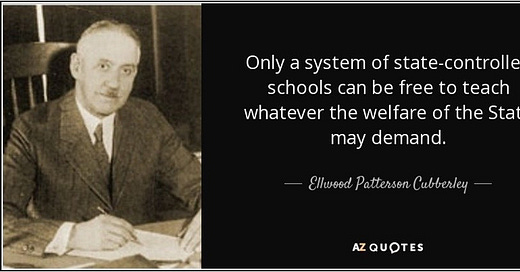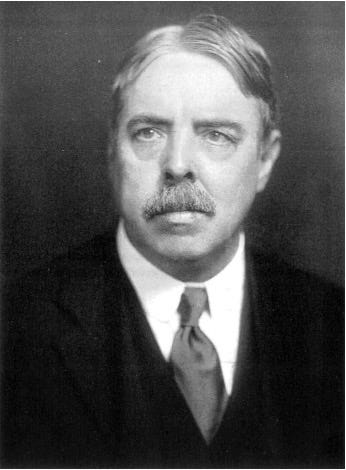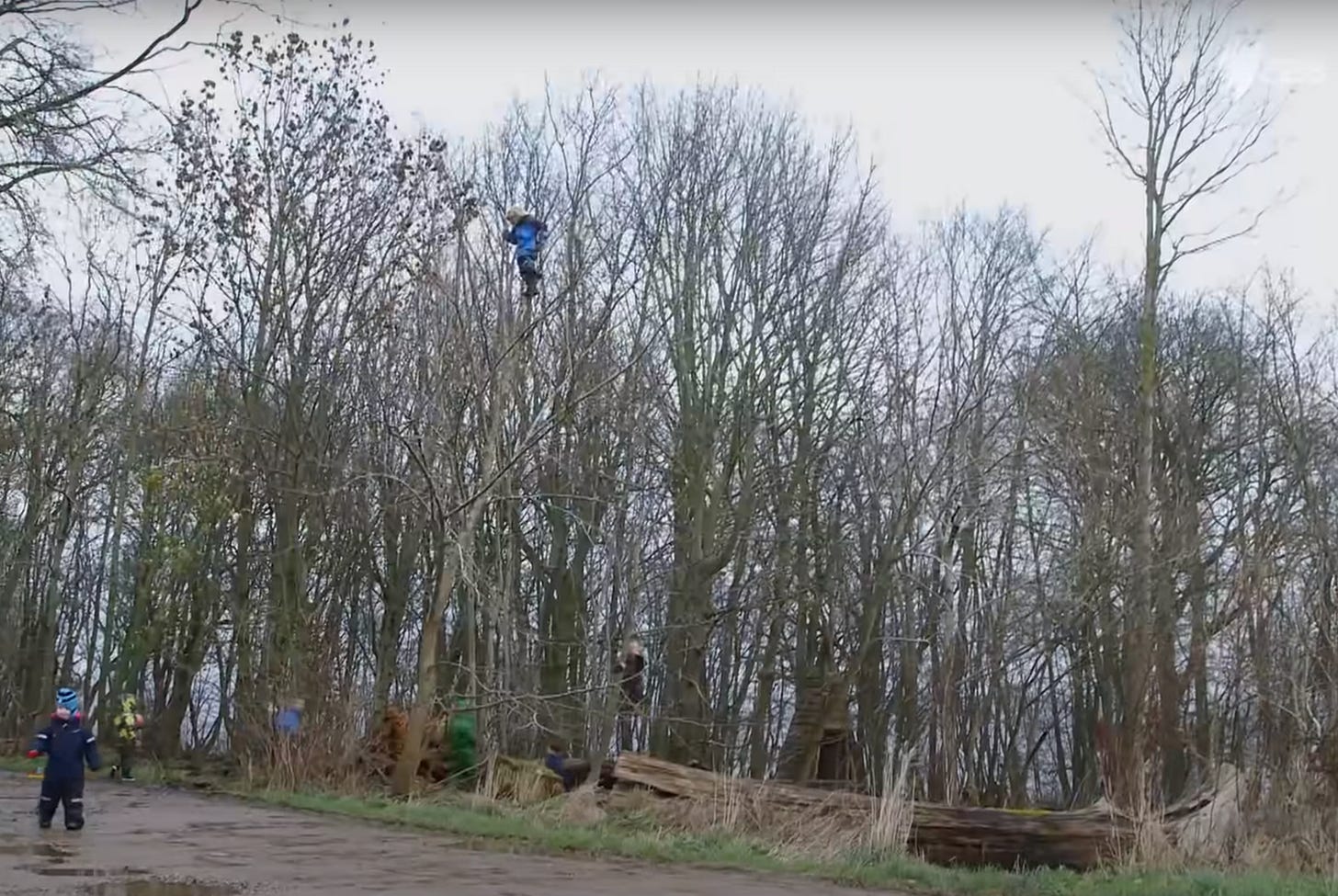The Straight Line From the Industrialization to the Sexualization of Children
How "Molding Young Minds" Became Grooming Young Children
In talking about the history of education, it cannot be overemphasized that the first American schools were set up by people who had a way of thinking and being in the world completely different from our own. To say that agricultural people are different from industrial (or post-industrial) people sounds banal, but only if the matter is not thought about very deeply. Though many aspects of their world had beauty and symmetry, such as their art and craftsmanship, very little of it was mechanically measured. Lacking clocks, their sense of time was naturalistic and indicated purely by the position of the sun and the brightness of sunlight. Their sense of season was shaped by the behavior of rain, snow, temperature, and foliage. Their sense of temperature was measured by feel and not by thermometers.
In talking about schools and childhood during this period, the practice of violent, corporal punishment is usually brought up, but that shouldn’t shock us. After all, as agriculturalists, they were subject to Mother Nature’s raw bounty and raw violence in the form of natural disasters, drought, animal attacks, and grievous maiming in accidents with farm equipment. It’s not so much that they considered children to be mini-adults, so much that they considered children to be as much a part of the natural world as the adults were, and thus were treated with equal parts tenderness and violence. Our ancestors considered fighting to be as much a form of entertainment as a form of retaliation. The author of The Reshaping of Everyday Life recounts how one European traveler in the South noted that 1 in every 3 men was missing an eye because eye gouging was a common finishing move in wrestling matches, a popular sport. Huge brawls would take place between extended families. One was apparently caused by the allegation of a broken pot, and the consequences were several injuries, including a child with a cracked skull. Riots were common on religious holidays, especially Christmas Eve. Alcohol was consumed in abundance, including light mead or cider by children. Social interactions were warm but also at times bizarre by our standards, and it was not uncommon to find young couples having sex in fields out in the open. Expressions of both verbal and physical affection between close, platonic friends that today would be considered romantic were considered normal and non-sexual. Sharing beds was common between couples, siblings, parents and young children, and even friends and acquaintances of the same sex. The Reshaping of Everyday Life also shares the diary of a traveler who complained that he felt lonely and cold with no one to share a bed with. Thomas Jefferson recorded one evening at dinner with a yeoman family (of the type he politically championed) during one of his travels. A man who was present went into extreme detail about his recent troubles with hemorrhoids and even reached into his pants to produce the bloody rag he was using as a bandage: at the dinner table.
All of this is not to excuse corporal punishment, but simply to describe how it was an extension of these people’s experience of living in a world very different from our own. A memoirist of post-Revolution America described, without any sense of this being abnormal, how when she was a young child, she ran up to talk to her father while he was harvesting or raking in the fields. Angry at being interrupted, but without saying a word, he picked her up, tossed her in the air, and then caught her head on the iron of his rake. Despite this, she remembered it as a time of “agrarianism and hilarity”, in contrast to the new Victorian world forming around her of greater orderliness, sobriety, sexual restraint, and industrialization.1 Whatever we might say about the treatment of children at this time, it was most definitely on the basis that children were living, vulnerable beings, and in need of equal parts affection, toughness, and protection. Children were not treated like passive material, (as industrial society would), or like minds floating in disposable meat suits (as post-industrial society is doing now).
It is the consequences of industrialization for children that are important here. By the turn of the century, a clear movement was forming for the “scientific management” of the growing school system. Education theorists at the time extolled, without any sense of insult, the virtues of efficiency and scale in education. Ellwood Cubberly, the dean of Stanford’s School of Education between 1916 and 1929, proudly stated:
I’m sure no one ever accused him of subtlety.
A superintendent of schools in Puerto Rico, Leonard Ayers, wrote a study in 1909 that ranked 58 school systems by how many children moved up a grade each year, which was his standard of efficiency2. This fixation with industrial efficiency was a break from the schoolhouse’s craft workshop model, which could have more than two dozen children working at different levels at any one time. This reflects America’s shift from a nation of farmers and craftsmen to factory workers and managers. The change in mindset was not purely theoretical: it led to certain discreet practices that today are the hallmarks of “cells-and-bells” public schools. Just as industrial work hours were longer and more regimented than agricultural/craft labor, school attendance became less seasonal and increased from roughly 80 days per year to the current standard of 180. Single-age and single-subject classrooms also became the norm, along with time-restricted periods whereby the child and teacher must transition when a bell rings. As subjects and children were broken down and separated into distinct parts from their original complete wholes, so too was the information to be learned. Edward Lee Thorndike, a leading professor of psychology at Columbia University’s Teacher College, pioneered this trend with his own textbooks, which allegedly earned him 5 times more than his salary as a professor. One Montessori teacher describes this industrial approach further3:
Thorndike’s textbooks are classic illustrations of the decontextualized material common in U.S. textbooks today. For example, one Thorndike textbook problem is: “Tom had six cents in his bank and put in three more cents. How many cents were in the bank then?”(Thorndike, 1917, p. 18). The reader knows nothing about Tom or his bank, and so must process disembodied information…
Thorndike believed that children could not transfer learning from one context to another unless the elements of the situation were the same, so supplying context was useless.
All of these features (the time periods, the single-age classrooms, the decontextualized information) evoke Cubberly’s analogy of the school as a factory, with children as a product having replaceable parts applied to them on an assembly line according to a tight, mechanically measured schedule.
Education theorists and teacher-trainers viewed the child as not just a blank, empty slate, but more specifically as passive material which the teacher was to shape into the model that society desired. The child did not “grow” like a tree, but was manufactured like a car on an assembly line. Children’s inner will and resistance to this dehumanizing process were the cause of much irritation. Thorndike wrote that the teacher must “control [the child’s] human nature” with behaviorist methods of punishments and rewards. His ideas and personality were a powerful force in education during the early 20th century.4
Edward Lee Thorndike
The Ministry of Learning and the teacher class have given much lip service about how children are not passive material, that the cells and bells model of education is dehumanizing, and that cognitive science has revealed that human beings learn better from synthesized wholes rather than decontextualized data points. Despite this, they have refused to make fundamental changes to make education more child-centered.
As our society shifted from an industrial to a post-industrial digital one, so too did our elites shift from industrialists to what the writer N.S. Lyons calls “Virtuals” in contrast to us lowly “physicals.” This is the class of “knowledge creators” and information manipulators: journalists, software developers, lawyers, consultants, and so on. He describes in his excellent article why this class, including the Minister of Learning, is constantly pushing for change:
Whether an academic, a journalist, a financial analyst, or a software developer, a member of this Virtual class makes his living—and, indeed, establishes his social and economic value—by manipulating, categorizing, and interpreting symbolic information and narrative. “Manipulate” is an important verb here, and not merely in the sense of deviousness. Such an individual’s job is to take existing information and change it into new forms, present it in new ways, or use it to tell new stories. This is what I am attempting to do as a writer in shaping this article, for example.
Members of this class therefore cannot produce anything without change. And they cannot sell what they’re producing unless it offers something at least somewhat new and different. Indeed, change is literally what they sell, in a sense, and they have a material incentive to push for it, since the faster the times are a-changin’ in their field, or in society, the more market opportunity exists for their products and services. They are, fundamentally, merchants of change.
The Virtuals are deeply uncomfortable with the physical limitations of reality which could contradict the narratives they are always recreating. This is not just because such physical limitations could hurt their material interests, but also because the human mind does not tolerate cognitive dissonance well, and the Virtuals have most definitely drunk their own Kool-Aid. If the teacher implants into the child the idea that they were born as the “wrong” sex, and gets the child to voice agreement, then that means the child’s body has to be surgically and chemically mutilated to conform to the socially constructed “truth.” (That, and the fact that adults engaging in this are cub-eaters). If the industrial-education theorists thought of children as nearly being non-sentient matter, then the Virtuals think of children as being minds floating in disposable meat suits. In their view, the body is a stack of meat legos that can be carved up and parts swapped out to conform to belief. The supposed power of these beliefs to overwhelm the biological realities of childhood development has already led to the assertion that pornographic books, sexual performances by men in dresses, and mutilation surgeries must be given to children and adolescents as a “human right”, regardless of parental consent. It will soon be asserted by elected politicians that these same children and adolescents have the power to consent to sex with adults. Anti-family activists are already laying the ground for that. This isn’t just about rice bowls anymore; this is a sexual and emotional power trip for them. That’s why these people don’t care about laws, democracy, or rational arguments. They will never play by that set of rules but will always weaponize those institutions when it suits them. Hence why this boy in Massachusetts wasn’t allowed to wear a shirt that said there are only two genders even as anti-family activists in the Deep South squawked about “censorship” and ‘book banning.” They are predators, pure and simple. At a time when fertility rates are plummeting and childhood chronic disease is becoming more common, this means an increase in the exploitation of that most valuable and already dwindling treasure: children. Let’s all hope China decides to start strangling America’s supply of electronic devices so that this class will be forced to start living in the real world (that might happen, by the way, but that’s a story for another article).
Thus, there is a straight line from the industrialization to the politicization and then to the sexualization of children. This class and set of institutions once compared children to manufactured products and told us that concrete-walled rooms filled with confining desks were suitable environments for them. They then started telling parents that young children needed to learn that white people carry the original sin of racism and antisemitism. If they didn’t, white children would grow up to be as monstrous as their ancestors supposedly were. Now, the Ministry of Learning says that surgical mutilation, chemical castration, and pornographic books are good for children. Soon, sex with adults will be added to that list.
It’s time we stopped letting this class of credentialed psychopaths experiment and prey upon our children. We should instead look for models that treat children as living, sentient beings, based on knowledge humans have possessed for centuries, even millennia. Some educational theorists have already rebelled against the machine, and I will be devoting a series of articles to them soon.
Thank you for coming to my lesson today. Class is dismissed.
I read all these stories and gathered this information in The Reshaping of Everyday Life: 1790-1840, which I can vividly recall but unfortunately don’t have a copy of anymore. Due to my current state of poverty, it is impractical for me to buy a new one right away for this article.
Angelina Stoll Lillard, Montessori: The Science Behind the Genius, pg. 5
Ibid, pg. 9
Ibid, pg. 8






